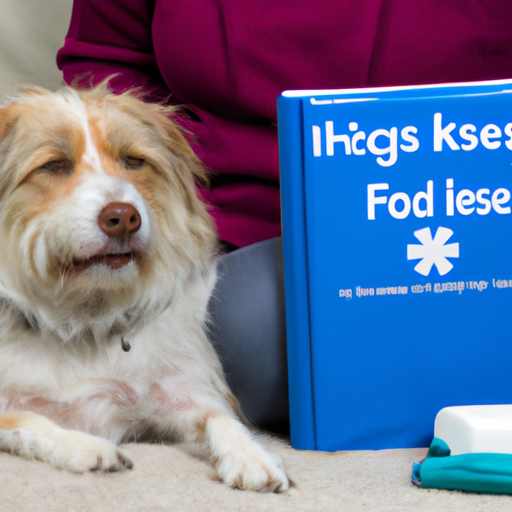As a caregiver, you’re always on high alert for any sign of distress in your furry friend. Seizures in dogs can be quite alarming and while it’s critical to get veterinary help, there are ways you can help manage the situation. Here’s what you can do:
1. Keep Calm and Maintain a Safe Environment
It’s a scary sight, seeing your dog in the throes of a seizure. But remember, your dog needs you to remain calm.
- Clear the area of any objects that might pose a danger to your dog.
- Try to move them away from stairs or high places where they could fall and hurt themselves.
- Do not put anything in their mouth. They won’t choke on their tongue.
- Keep your hands away from their mouth as well; they might unintentionally bite you.
2. Record the Seizure
Recording a seizure can provide valuable information to your vet.
- Try to record the length of the seizure.
- Note down any specific behaviors or movements.
- If possible, take a video. This can be more informative than a written description.
3. Seek Veterinary Assistance
After the seizure, it’s important to get your dog to the vet.
- Your vet can perform tests to determine the cause of the seizure.
- They might prescribe medication to manage or prevent seizures in the future.
| Tests | Purpose |
|---|---|
| Blood tests | Check for underlying diseases |
| MRI or CT scan | Look for abnormalities in the brain |
| Spinal fluid analysis | Detect inflammation or infection |
4. Understand the Possible Causes
Seizures can be caused by a variety of conditions. It’s important to understand these potential triggers so you can avoid them.
- Epilepsy: This is one of the most common causes of seizures in dogs.
- Brain tumors: These can cause seizures as they grow and put pressure on the brain.
- Toxic substances: Certain chemicals or foods can trigger seizures.
- Metabolic disorders: Conditions like liver disease or low blood sugar can lead to seizures.
5. Manage Your Dog’s Health Post-Seizure
Your role as a caregiver doesn’t end when the seizure does. Here’s what you can do to ensure your dog’s well-being:
- Administer prescribed medication as directed.
- Monitor your dog for any changes in behavior or health.
- Maintain a seizure diary to track frequency and severity of seizures.
FAQ
Q: Can seizures in dogs be cured?
A: While some causes of seizures can be treated, others, like epilepsy, can’t be cured but can be managed with medication.
Q: Can a dog recover from a seizure on its own?
A: Yes, most seizures are self-limiting and the dog will recover on its own. However, prolonged seizures can be life-threatening and require immediate medical attention.
Q: Can food cause seizures in dogs?
A: Certain foods, like those high in salt or sugar, or toxic foods like chocolate, can trigger seizures in susceptible dogs.
Q: How can I prevent seizures in my dog?
A: Regular vet check-ups, a healthy diet, and avoiding known triggers can help. If your dog has been prescribed medication, ensure it is taken as directed.
Remember, as a caregiver, your love and support can make a world of difference to your dog’s health and happiness. Stay informed, stay vigilant, and most importantly, stay calm.



